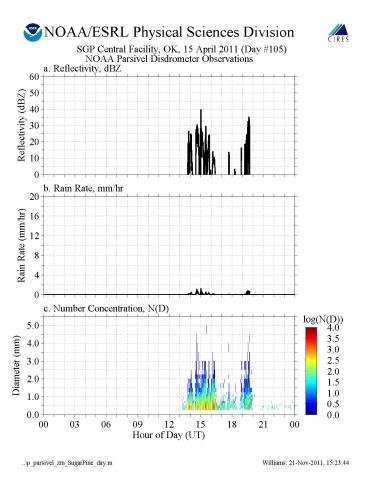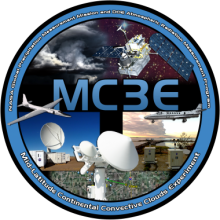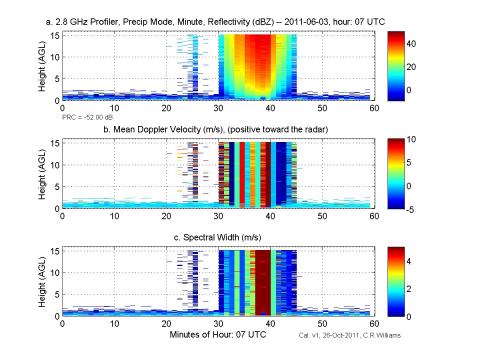 The GPM Ground Validation NOAA Parsivel MC3E data collected during the Midlatitude Continental Convective Clouds Experiment (MC3E) experiment in central Oklahoma contains moment data (reflectivity and rain rate estimates) or raindrop number concentration estimates. This data provided a reference reflectivity to calibrate the S-band profiler during the experiment. This dataset is available to the public. The raw data files for this dataset were archived as GPM Ground Validation NOAA Parsivel Raw Data MC3E by request of the Principal Investigator. Since the processed data is available as the GPM Ground Validation NOAA Parsivel MC3E dataset, the raw data will only be distributed by approval of the Principal Investigator.
The GPM Ground Validation NOAA Parsivel MC3E data collected during the Midlatitude Continental Convective Clouds Experiment (MC3E) experiment in central Oklahoma contains moment data (reflectivity and rain rate estimates) or raindrop number concentration estimates. This data provided a reference reflectivity to calibrate the S-band profiler during the experiment. This dataset is available to the public. The raw data files for this dataset were archived as GPM Ground Validation NOAA Parsivel Raw Data MC3E by request of the Principal Investigator. Since the processed data is available as the GPM Ground Validation NOAA Parsivel MC3E dataset, the raw data will only be distributed by approval of the Principal Investigator.


 GHRC has published
GHRC has published  The full suite of S-band profiler datasets from the GPM Ground Validation Midlatitude Continental Convective Clouds Experiment (MC3E) is now available:
The full suite of S-band profiler datasets from the GPM Ground Validation Midlatitude Continental Convective Clouds Experiment (MC3E) is now available:



